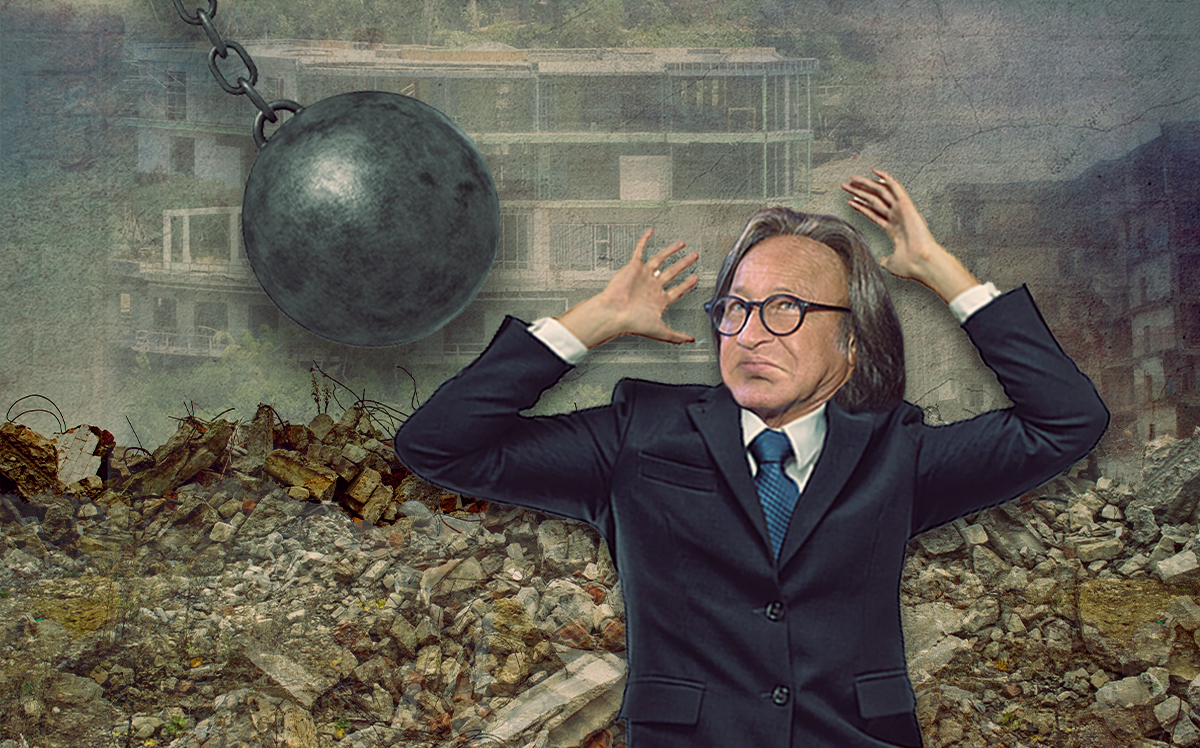Trending
Hadid mansion case has echoes of a Saudi sheikh
Mohamed Hadid is fighting to save his half-built Bel Air mansion from the wrecking ball, something that hasn't happened in LA since 1985, when Sheikh Mohammed al-Fassi’s Beverly Hills estate was demolished.

In 1978, Mohammed al-Fassi — an in-law of Saudi Arabia royalty — and wife, Dena, bought a 38-room Beverly Hills mansion and promptly made their presence known. Neighbors complained about the couple’s all-night parties on the corner of Sunset Boulevard and North Alpine Drive, about the home’s “rotting lime” new coat of paint, the extensive renovations and nude statues on the front yard they deemed obscene.
By 1985, the city had had enough. Following a fire that damaged the estate, the local City Council voted to demolish the 68-year-old mansion. By then, the couple had enough, too; they decided to sell the property and host a wild demolition party.
Government-ordered demolitions of multimillion-dollar homes are exceedingly rare in Los Angeles, where city officials, longtime brokers, industry experts and architectural historians interviewed said they could not name another case like it…until now.
Today, another very rich homeowner and developer, Mohamed Hadid, is fighting a judge’s demolition order over his half-built Bel Air mansion, which neighbors deem a hazard and an eyesore. The case is similar in that, like al-Fassi and his Beverly Hills neighbors, Hadid is also doing battle with the local Bel Air community.
Similar confrontations have popped up elsewhere.
In March, a judge in Grasse, France, ordered developer Patrick Diter to tear down his chateau, which cost roughly $64 million to build. Like Hadid, Diter was accused of building without a permit.
In New York, developer Harry Macklowe admitted last month that he didn’t obtain a permit when he destroyed wetlands in order to build his East Hampton mansion. That case is ongoing.
And in San Francisco, the planning commission last year ordered a homeowner to rebuild the two-story house he had demolished, after purchasing it for $1.7 million. The city determined that the man, Ross Johnston, tore down an architecturally significant home, designed by celebrated modernist architect Richard Neutra.
Local governments, including civil court judges, have “broad injunctive relief powers” to order buildings demolished — or rebuilt — said Scott Gizer, a real estate attorney at L.A.-based Early Sullivan Wright Gizer & McRae.
A possible problem with orders to demolish large homes is not whether it’s enforceable, but who can pay to tear it down, he said. Gizer worked on a case involving the dismantling of the Harmon Hotel in Las Vegas. All parties agreed that the steel structure was not properly built, but a lengthy court battle followed over who would pay to take it apart. It took seven years before the partially-built tower was finally dismantled, in 2015.
Footing the demolition bill is also an issue for Hadid. The developer claims that the limited liability company behind his Bel Air mansion does not have the $500,000 needed to put the property into receivership, much less the estimated $5 million it would cost to demolish. The judge’s ruling does not specify who will pay for the work.




